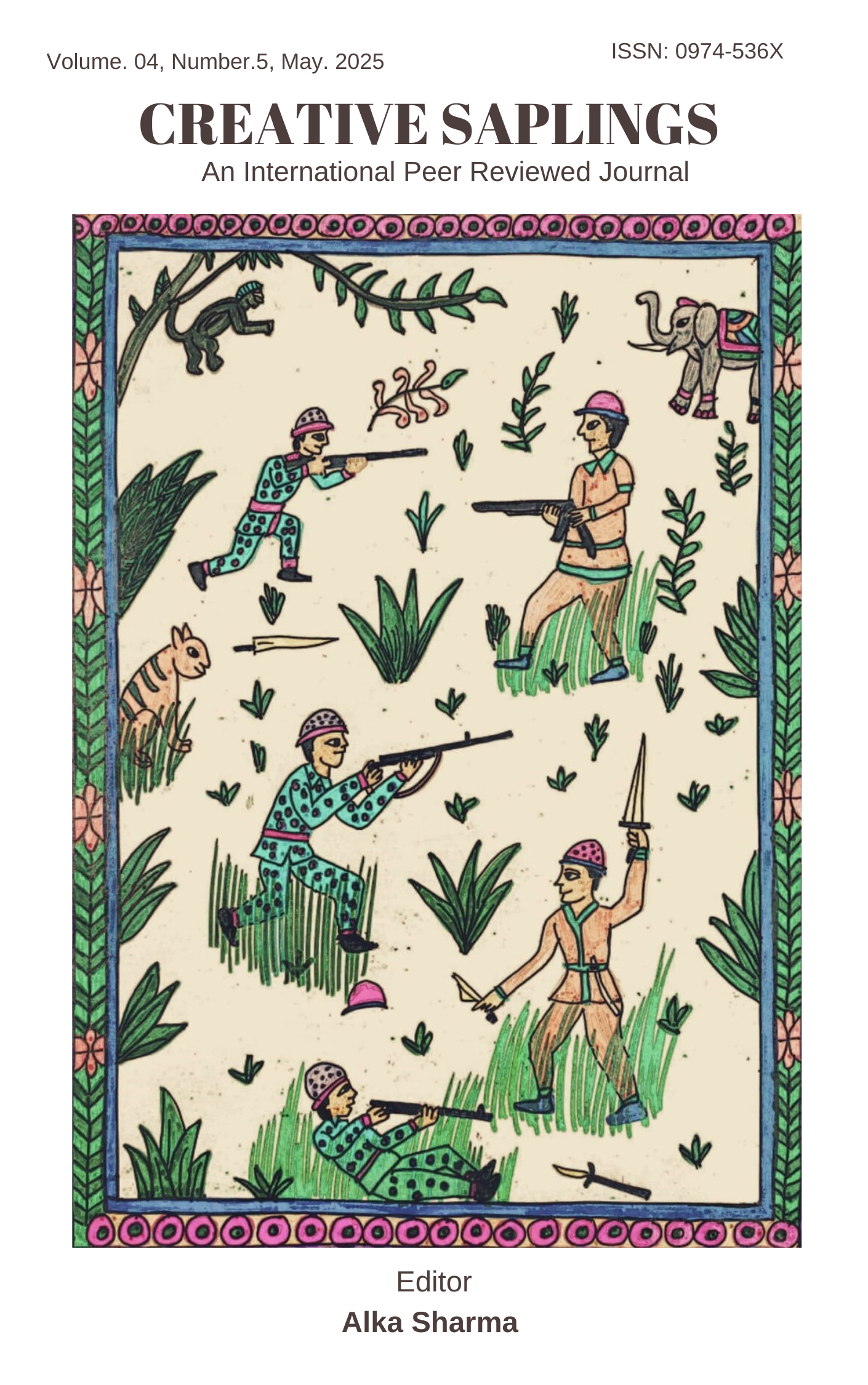Coloured Hanky (An Adaptation of Othello)
DOI:
https://doi.org/10.56062/Keywords:
Coloured Hanky, Shekespeare, Othello, Sanjay Kar, Baishnab Charan AddyAbstract
Sanjay Kar used the historical backdrop of Imperial Tripura as the plot of his play when the Mughal emperor Suja wanted to defeat the existing king conspiring with Nakkshatra Roy, another claimant of the throne of Tripura. The existing king, Gobindo Manikya, had chosen a young, brave, and strong man from the fishermen’s community as his commander-in-chief. Thus, Atulchandra is the Tripura prototype of Othello the Moor. Both have a black complexion, and they come from lower-class families. Through the conversation of several other characters like Aghore, who is modelled after Iago, the ongoing hatred towards the lower class has been expressed. This has been clearly expressed in the conversation between Aghore and Rudranarayan. But the King needs a brave heart like Atul, and so he gets his due from the king. However, he falls in love with Debaleena, a beautiful young woman from the royal family who is much younger than Atul. As a villain, Aghore planned to disrupt this relationship. He succeeds in implanting jealousy and distrust in Atul against Debleena, and Rangeen rumal (a coloured hanky) plays a crucial role in this misfortune of the duo. Atul gave this to Debleena as a gift from his mother, which he believed had some magical power. He advises Debleena to keep the hanky in her safe custody so that it is not lost. The cunning Aghore has this information and uses his wife, Daliya, to steal the hanky from Debleena. Ultimately, the frenzied Atul killed his wife out of jealousy and soon after, he killed himself knowing the truth from Daliya.
Downloads
Downloads
Published
Issue
Section
License

This work is licensed under a Creative Commons Attribution-NonCommercial 4.0 International License.





